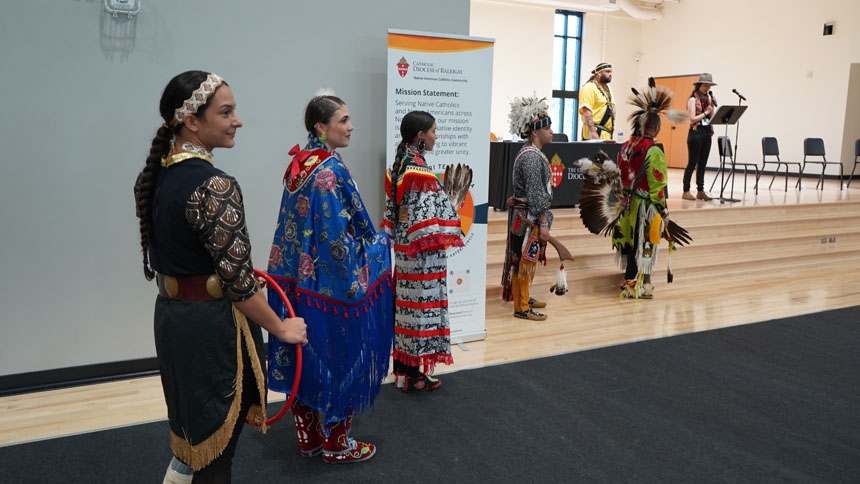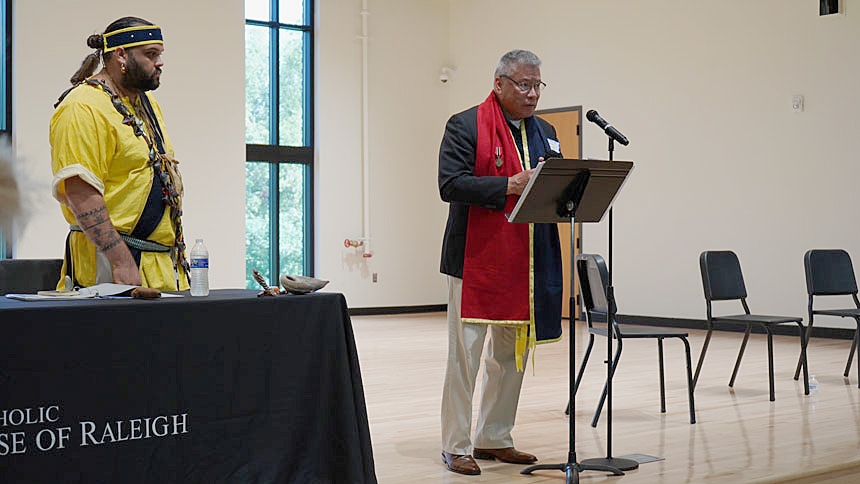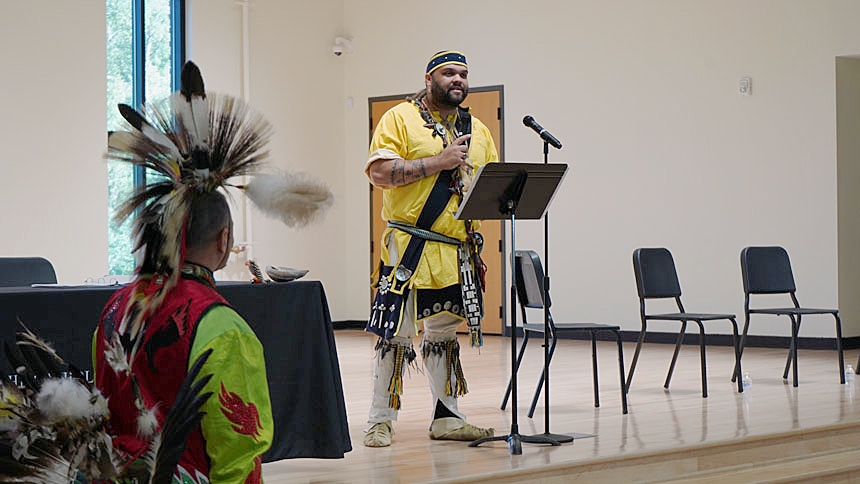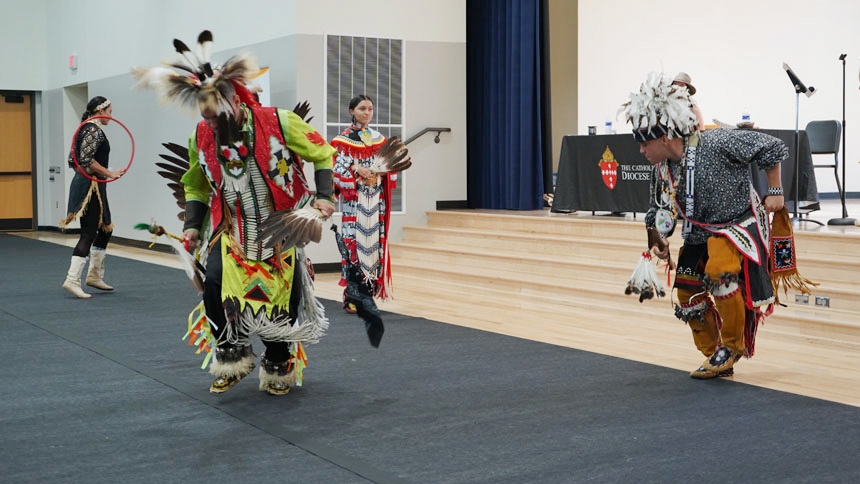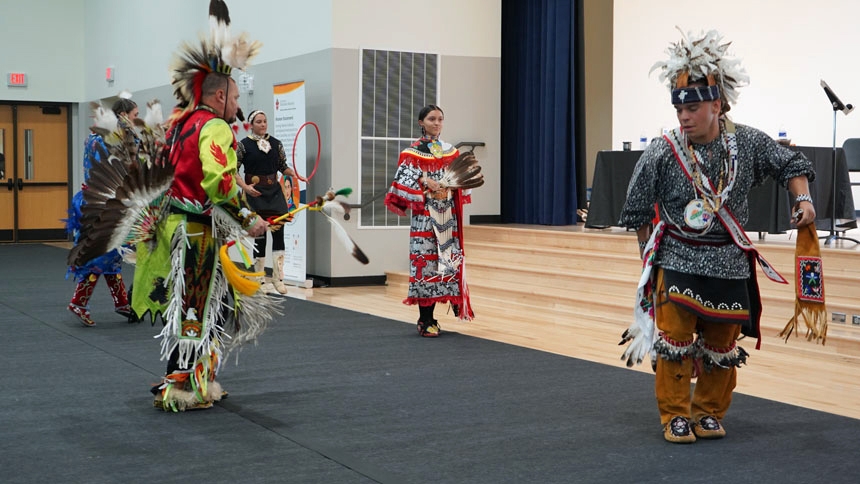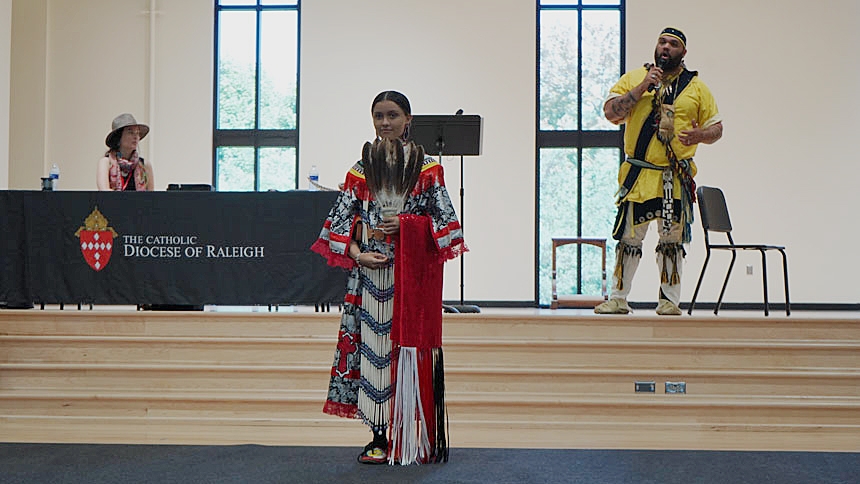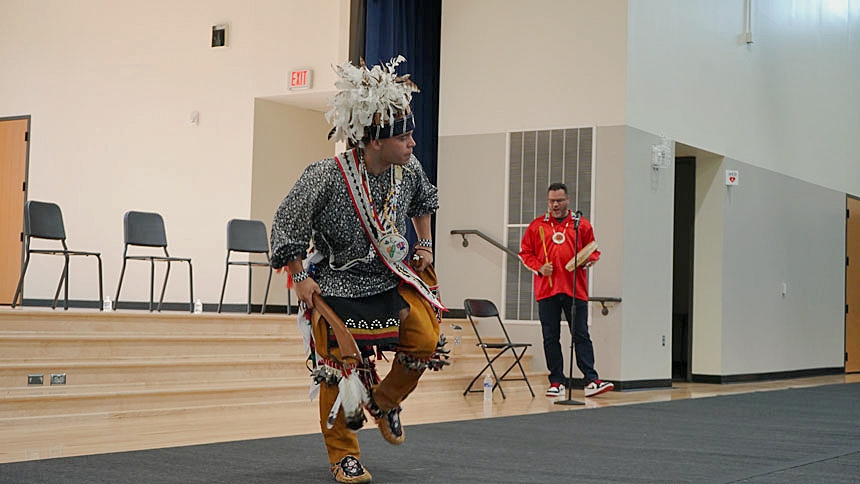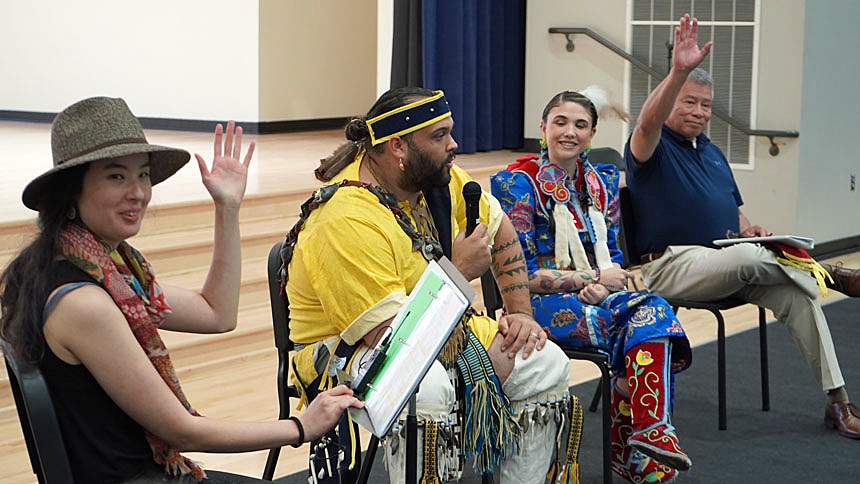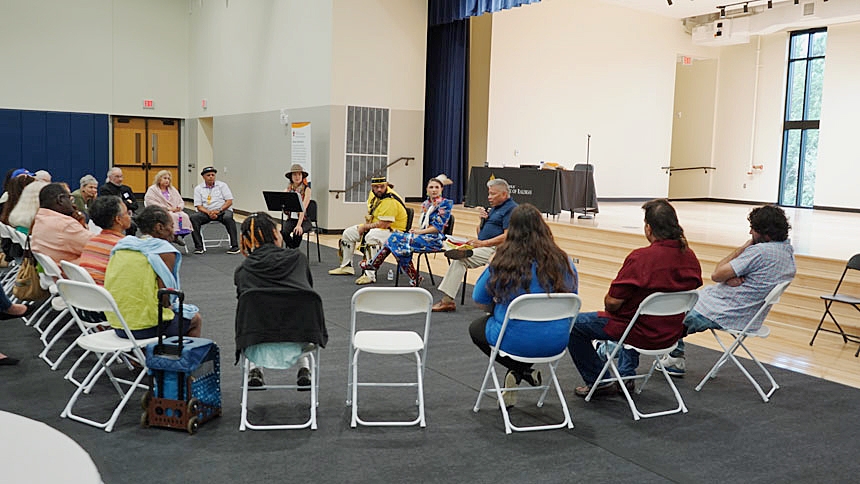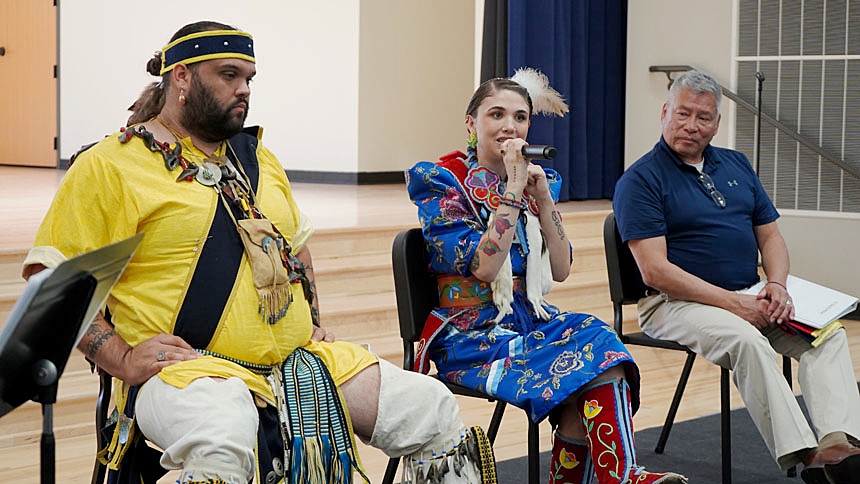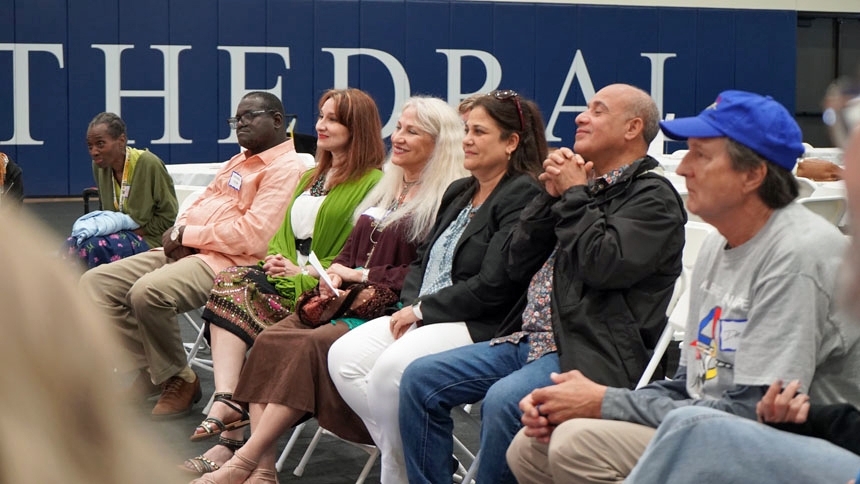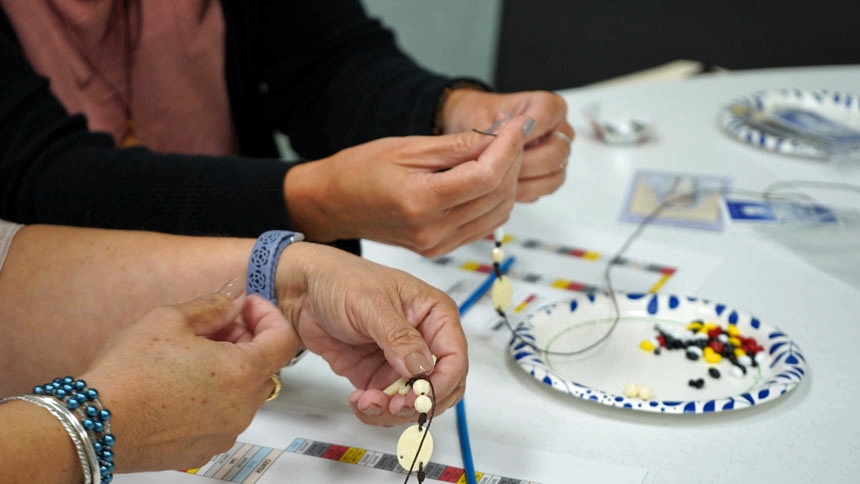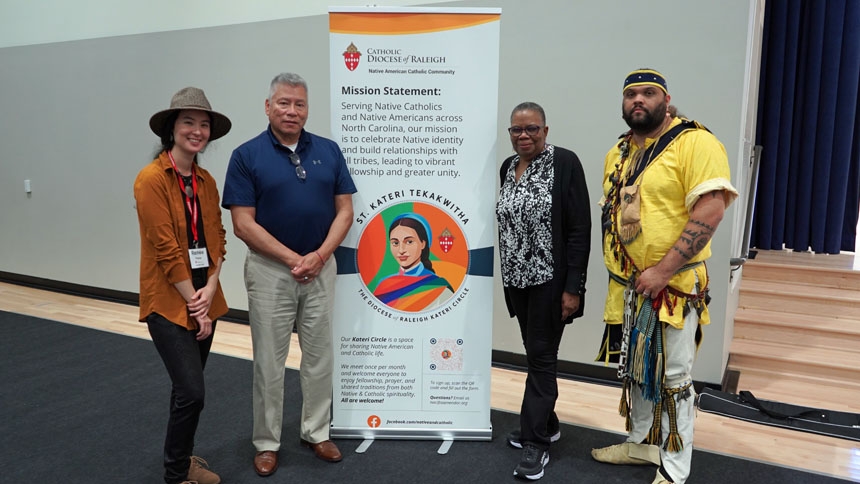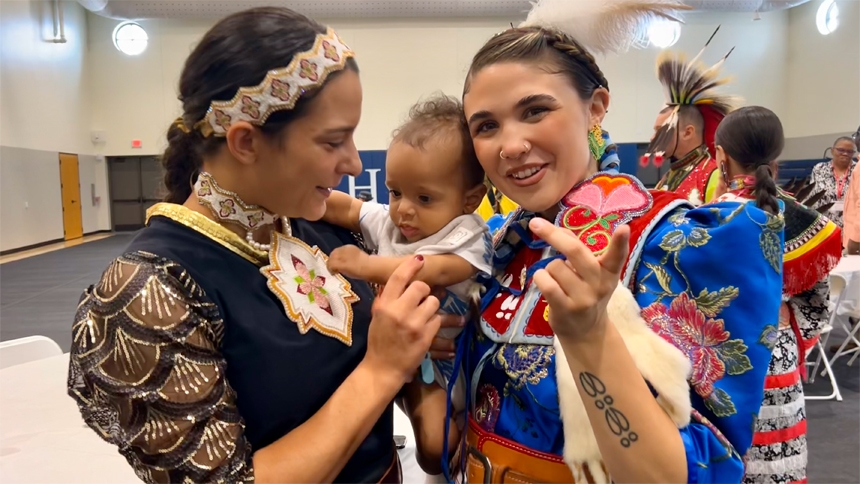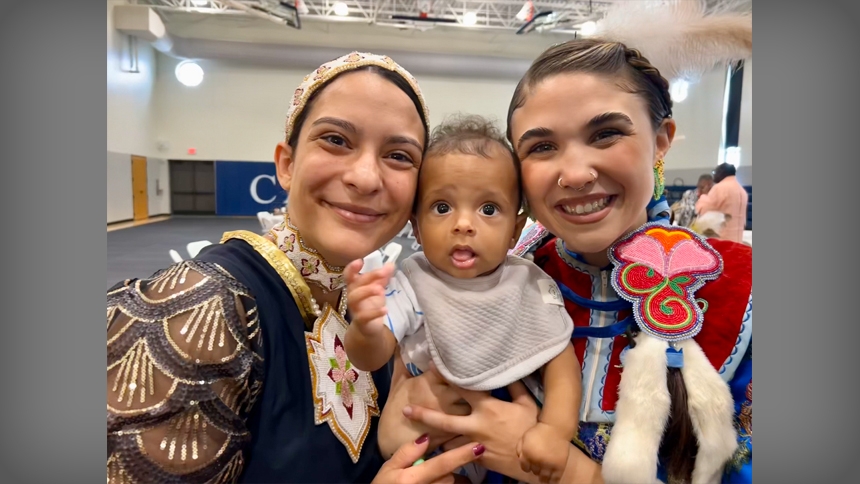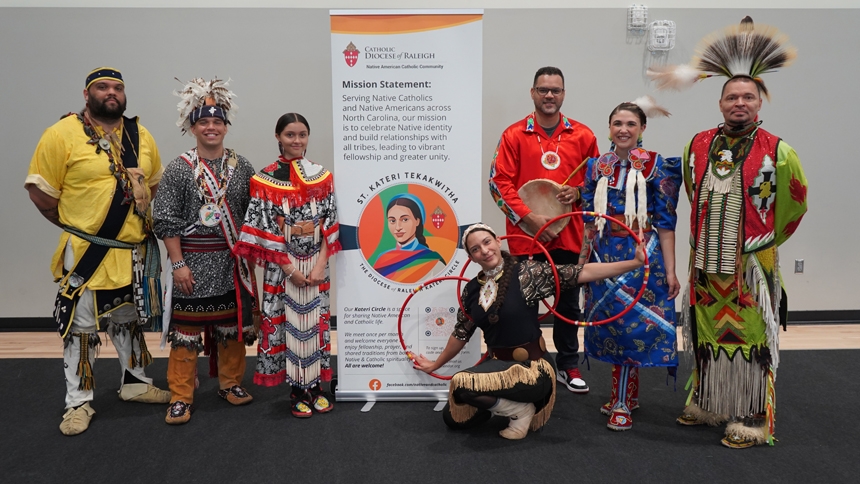
RALEIGH - Native American Catholics and friends gathered Oct. 5 for a heritage celebration that included powwow dancing, storytelling, a community meal and a panel discussion focused on Native American traditions and the Catholic faith.
As dancers prepared and attendees gathered, Father David Miller, chaplain to the Native American Catholic Community (NAC) in the diocese and a citizen of the Cherokee Nation, began the day with smudging. He said that smudging, which is like incensing during Mass, imparts a blessing and is also cleansing.
“It’s usually done with a feather, sweetgrass for the aroma … and a dish to burn the sweetgrass in,” he said. “And we wave it over the person, and the person will breathe it in, bring it over their head and across their body. It’s part of our rituals done in ceremonies.”
Dressed in regalia, Ryan Dial and his twin sister, Raven Dial-Stanley, led the dancing, which, he said, differed from ceremonial dances, which aren’t often done for the public.
They are citizens of the Lumbee Tribe of North Carolina. Dial lives in Durham; Dial-Stanley lives in Greensboro.
“My family lives in Robeson County, which is where our traditional homelands are,” said Dial.
He said all the dances have different protocols and different regalia, or custom-made clothing. But what’s a mainstay is that the dancers will move their feet to the same beat that the drum is playing. It’s a tradition that’s centered on respect for singers and drummers.
“Without them we don’t have these dances or these powwows,” he said.
Dial-Stanley said the dances tell a story and are contemporary.
“That style is newer … I would say only a little over, maybe, 100-years old,” she smiled. “Which, look at our history. That’s a pretty short amount of time.”
Renée Fisher, who helped organize the event for NAC, said it was part of the diocesan centennial and, therefore, a very meaningful time.
“As the Catholic Church, we want to make sure we are building bridges of understanding by inviting Native Americans to our space to share their traditions the way they want to,” she said, noting that they aimed to make the event both well-rounded and accessible.
The community meal featured “Three Sisters” soup, made from beans, corn and squash, “which are staple crops for the indigenous communities … around harvest time,” said Fisher.
Jennifer Jones, administrator of NAC and a colleague of Fisher’s, noted that there was a story to go along with the soup.
“It’s about how the sisters, in growing vegetables, how they were integrated into one another and supported one another,” she said, noting that many farmers today follow a similar process.


